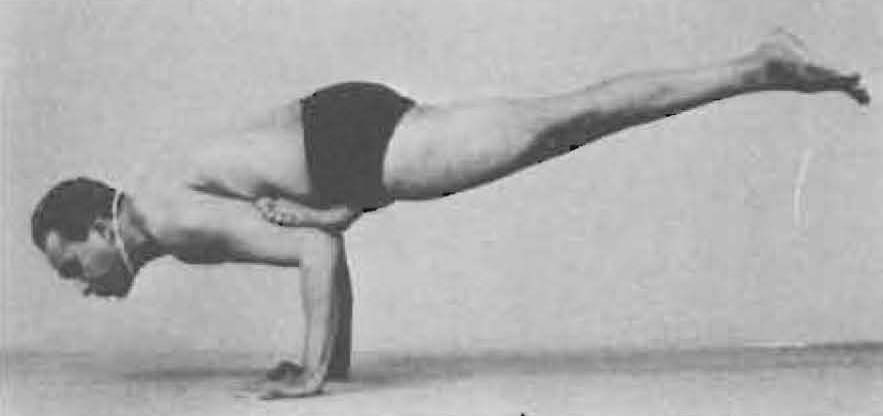|
To sequence a vinyasa class around a peak pose is a planning tool. Yes, correct. It's not about doing the pose itself. It's about using that pose as a lighthouse in the distance, then navigating towards it. It's about preparing your students' bodies for a fair and safe chance to approach the pose. In reality, quite often you won't even do that pose. You certainly won't tell the class that you have a peak pose. It's a planning tool. How?
1. It gives you a direction and a physical theme. We cannot do all the fun stuff in every class, so this is a simple way of crossing out poses and cues that don't fit into the theme. 2. It forces you to analyse a pose and dissect it, to taste it and try it and figure out its' components, energies, alignment and actions. For example, Flying Pigeon (Eka Pada Galavasana, demonstrated by BKS Iyengar above) is a Figure Four shape in the front leg on top of a Chaturanga, with the action of shooting the back leg upwards. 3. Once you have figured out the above, simply look for other poses with similar alignment, actions and angles. How can you teach the pose without doing the pose? We usually recommend identifying 5 key poses that pick up the components of your complex pose in a simpler way. 4. Now you can sequence your class. Use the key poses, the suitable actions and alignment as well as verbal cues throughout your warm-up and main part of class. Always plan a well-rounded and balanced class with all different movements the body can do, but use your peak pose to navigate. Interested to learn more? Vinyasa Flow Teacher Training in Portugal ›› |
AuthorArticles about the world of teaching and living Vinyasa Flow Yoga by Elin Jensen and Lisa Andersson Rhodiner Categories
All
Archives
November 2023
Categories
All
|

 RSS Feed
RSS Feed